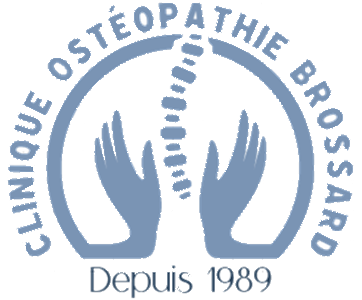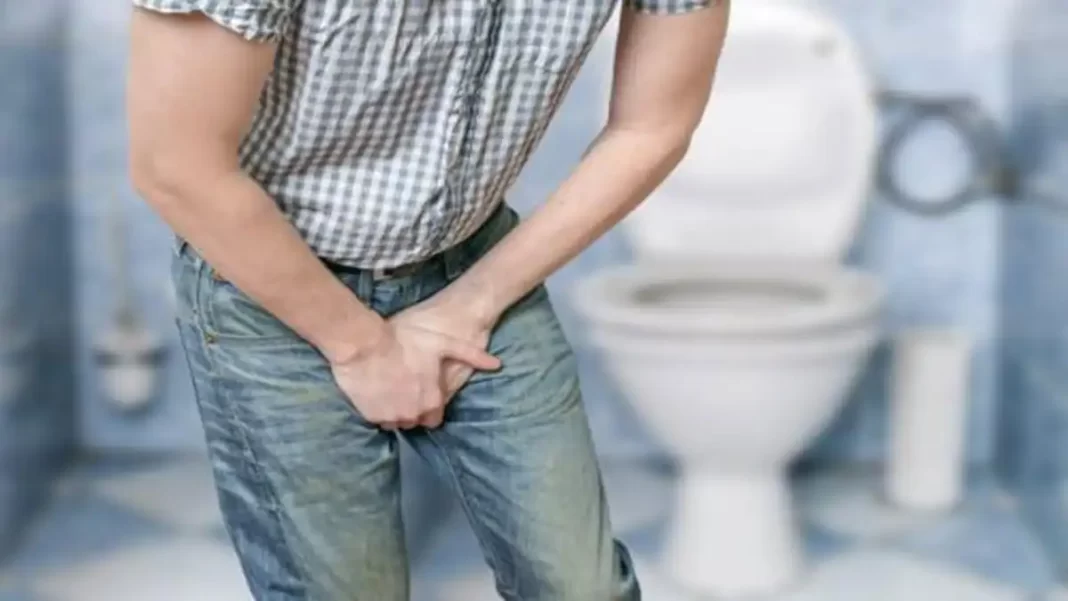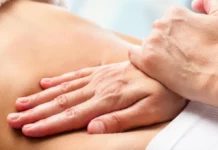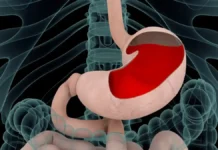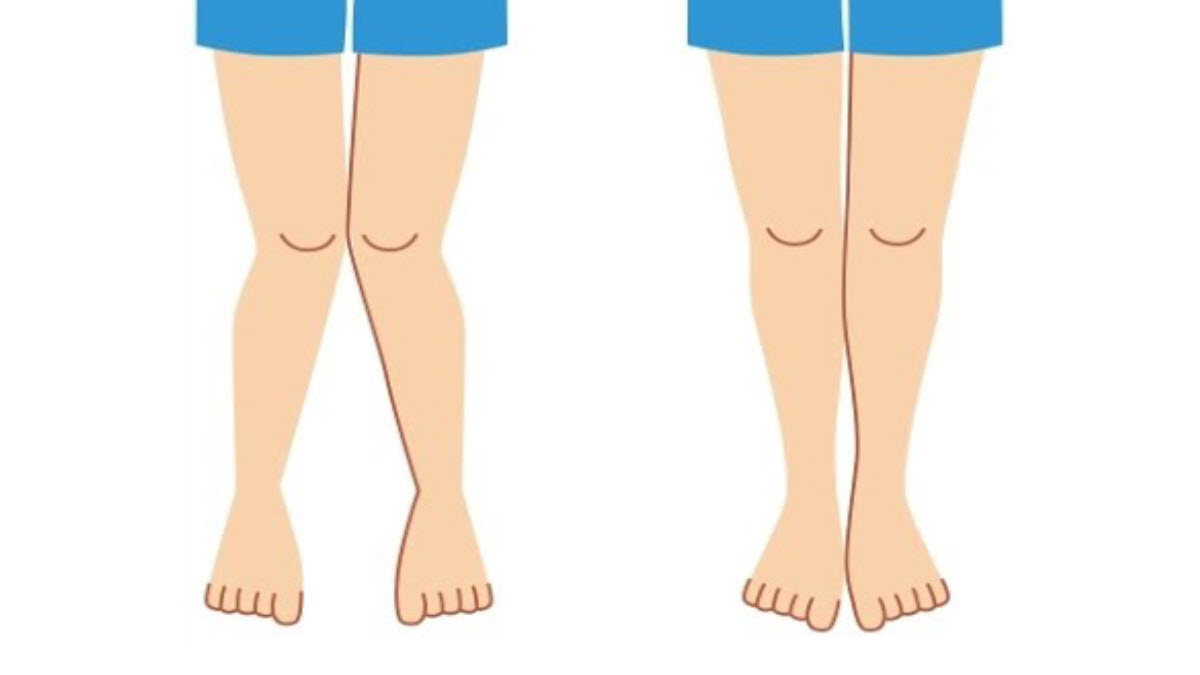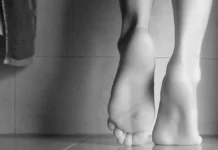Prostatitis is swelling and inflammation of the prostate, a walnut-sized gland located directly below the bladder in men. Prostatitis often causes painful or difficult urination.
Introduction
Chronic prostatitis and levator ani muscle syndrome are two conditions that significantly impact men’s pelvic health, often leading to persistent pain, discomfort, and disruption of daily activities. Chronic prostatitis is marked by long-term inflammation of the prostate, resulting in symptoms like pelvic pain, urinary difficulties, and general discomfort. Levator ani syndrome, on the other hand, involves chronic tension or spasms in the pelvic floor muscles, manifesting similarly with pelvic pain, urinary disturbances, and challenges during sexual intercourse.
These disorders do not merely affect physical well-being; they also take a toll on psychological and emotional health. Anxiety, depression, and stress are common co-factors that can exacerbate symptoms. As a result, managing chronic prostatitis and levator ani syndrome requires a comprehensive, holistic approach. This means addressing not only the medical aspects, but also the emotional and psychological dimensions, to improve overall quality of life.
Traditional treatments, such as anti-inflammatory medications, antibiotics, and symptom management techniques, are often employed for chronic prostatitis. However, stress management, pelvic floor therapies, and relaxation techniques are essential complementary approaches. Similarly, treating levator ani syndrome requires a focus on muscle relaxation, osteopathic interventions, and lifestyle modifications.
By understanding the intertwined physical and emotional components of these conditions, healthcare providers can deliver more effective treatments, helping patients regain control over their well-being and daily life.
- Pelvic Pain: Men with chronic prostatitis often experience persistent pain or discomfort in the pelvic area, sometimes radiating to the lower back or genitals.
- Urinary Disorders: Urinary symptoms may occur, such as frequent urination, difficulty starting or maintaining urine flow, burning sensation during urination, or cloudy urine.
- Pain During Ejaculation: Some men may experience pain during or after ejaculation, which can impact their sex life.
- General Discomfort: General symptoms such as fatigue, body aches and fever may accompany chronic prostatitis, contributing to a feeling of general discomfort.
The Role of the Levator Ani in Managing Chronic Prostatitis
Chronic prostatitis, particularly chronic pelvic pain syndrome (CPPS), is a complex condition that often goes beyond inflammation of the prostate itself. While many assume that chronic prostatitis is solely a prostate issue, a growing body of evidence shows that the surrounding pelvic muscles, especially the levator ani, play a critical role in both the development and persistence of symptoms. Treating levator ani dysfunction has become an essential part of managing chronic prostatitis, especially in cases where muscle tension and pelvic floor dysfunction are present .
Understanding the Levator Ani Muscle
The levator ani is a group of muscles that forms the floor of the pelvic cavity. This muscle group, which includes the pubococcygeus, puborectalis, and iliococcygeus muscles, provides structural support for the pelvic organs, including the prostate, bladder, and rectum . These muscles are involved in various important functions such as bowel and bladder control, as well as sexual function .
In cases of chronic prostatitis, the levator ani muscles can become tight, spasm, or overactive, contributing to a range of symptoms. This dysfunction often leads to pelvic pain, urinary disturbances, and discomfort during sexual activity, mimicking or exacerbating the symptoms of chronic prostatitis .
How Levator Ani Dysfunction Affects Chronic Prostatitis
Chronic prostatitis, particularly the form known as chronic pelvic pain syndrome (CPPS), is frequently associated with muscle tension and dysfunction in the pelvic floor. The levator ani muscles, when tense or in spasm, can create pressure in the pelvic region, exacerbating pain and discomfort. This muscle tension can also interfere with normal urinary and sexual function, contributing to the frustrating symptoms many men experience .
In CPPS, pain is often cyclical, with muscle tension playing a key role in perpetuating the cycle. Stress, anxiety, and emotional strain can also trigger or worsen muscle tension, further aggravating the condition . For this reason, many healthcare professionals now view chronic prostatitis as a multifactorial issue, one that requires addressing not just the prostate, but also the surrounding muscles and even the psychological state of the patient .
The Benefits of Treating the Levator Ani
Treating the levator ani can have a profound impact on alleviating the symptoms of chronic prostatitis. One of the most effective methods is pelvic floor therapy, which involves targeted exercises and manual techniques designed to relax the pelvic muscles, improve coordination, and reduce spasms . This therapy can help relieve tension in the levator ani, easing pelvic pain and improving urinary function .
Osteopathic treatment or manual therapy is another approach that has been shown to be effective. By gently manipulating the pelvic floor muscles, an osteopath can help release tension and improve blood flow to the region, which in turn can reduce inflammation and pain in the prostate and surrounding structures .
In addition to manual therapies, patients are often encouraged to perform specific pelvic floor exercises. These exercises, such as reverse Kegels, are designed to relax the pelvic floor muscles, counteracting the chronic tension that may be contributing to the symptoms of prostatitis .
The Psychological Connection
It is also important to recognize the psychological aspect of levator ani dysfunction. Stress, anxiety, and even depression are commonly seen in men with chronic prostatitis, and these emotional states can exacerbate muscle tension in the pelvic floor . As a result, holistic management of the condition often includes stress reduction techniques such as mindfulness, cognitive behavioral therapy (CBT), or relaxation exercises . Addressing the psychological component helps break the cycle of muscle tension and pain, leading to better overall outcomes.
Distinction between Bacterial and Non-Bacterial Prostatitis
- Bacterial Prostatitis: In cases of bacterial prostatitis, a bacterial infection of the prostate is identified as the underlying cause. These infections can result from bacteria from the urinary tract or other parts of the body.
- Non-Bacterial Prostatitis: Chronic non-bacterial prostatitis, also called chronic prostatitis/chronic pelvic pain syndrome (CP/CPPS), accounts for the majority of cases of chronic prostatitis. In these situations, no identifiable bacterial infection is present, and the cause of the inflammation may be related to non-infectious factors, such as autoimmune disorders or immune system dysfunction.
It is crucial to differentiate the types of prostatitis, as this influences treatment approaches. While bacterial prostatitis may require antibiotics to treat the infection, management of non-bacterial prostatitis may involve more diverse approaches, including measures to relieve symptoms, osteopathy, or treatments aimed at regulating immune responses. An accurate diagnosis, often based on assessment of symptoms and tests, is essential to determine the best management strategy for each individual case.
Symptoms of prostatitis and its Impact on the Pelvic Plane
Prostatitis, an inflammatory condition of the prostate, presents varied symptoms that have significant impacts on the pelvic plane of men. Among the predominant manifestations is persistent pelvic pain, often localized in the prostate region and likely to radiate to the perineum, lower back, and genitals. This pain, whether constant or intermittent, contributes substantially to the physical and psychological discomfort of affected individuals. Another common symptom is discomfort or pain during urination, resulting from irritation of the urethra or bladder, thus adding a disruptive dimension to the daily routine. Urinary disorders, such as increased urinary frequency, difficulty initiating or maintaining urinary flow, as well as a feeling of incomplete emptying of the bladder, represent major aspects of this condition, significantly impairing the quality of life. In addition, prostatitis can cause pain during ejaculation, impacting not only the physical sphere but also the sexual and emotional health of the individuals affected. General symptoms such as fatigue, headache, muscle aches, and fever can also accompany chronic prostatitis, contributing to a feeling of overall discomfort and impairing patients’ overall well-being. In addition, this condition can give rise to sexual alterations, such as erectile dysfunction or reduced libido, leading to profound implications on the intimate life of individuals. Thus, a thorough understanding of the symptoms of prostatitis and their impacts on the pelvic level is essential for adequate management of this complex condition.
- Persistent Pelvic Pain: Pelvic pain is one of the predominant symptoms of chronic prostatitis. It can be localized in the prostate area, but it can also radiate to the perineum, lower back and genitals. This pain may be constant or occur intermittently.
- Discomfort or Pain During Urination: Some men with chronic prostatitis may experience pain or discomfort during urination. This may be associated with irritation of the urethra or bladder.
- Urinary Disorders: Symptoms such as increased urinary frequency, difficulty initiating or maintaining urinary flow, and a feeling of incomplete emptying of the bladder may occur.
- Pain during Ejaculation: Ejaculation may be painful in some men with chronic prostatitis. This pain may be felt in the pelvic or genital area.
- General Symptoms: General symptoms such as fatigue, headache, muscle aches and fever may accompany chronic prostatitis, contributing to an overall feeling of discomfort.
- Sexual Alterations: Some men may experience sexual problems, such as erectile dysfunction or decreased libido. These alterations can have significant psychological repercussions.
Link to Pelvic Pain and Implications for the Pelvic Floor
The connection between pelvic pain and pelvic floor implications is a crucial component in understanding pelvic disorders. Pelvic pain, often multifactorial, can result from various sources such as prostatitis, gynecological disorders, or muscular tension. This pain can manifest acutely or chronically, considerably impacting the quality of life of individuals. In particular, chronic pelvic pain can place significant pressure on the pelvic floor, leading to increased muscle tension and contributing to pelvic dysfunction. This interconnection between pain and the pelvic floor can lead to muscular imbalances, affecting pelvic stability and influencing urinary, bowel, and sexual functions. The implications for the pelvic floor extend beyond the physical sphere, also encompassing psychological aspects such as stress and anxiety related to persistent pain. Taking these links into account is essential in therapeutic approaches, highlighting the importance of a holistic assessment to effectively treat pelvic pain and restore the functional balance of the pelvic floor. Thus, an integrated approach considering the close link between pelvic pain and the implications for the pelvic floor is fundamental for comprehensive and effective management of these conditions, promoting the overall well-being of affected individuals.
- Tight Pelvic Floor Muscles: Chronic prostatitis, especially in its non-bacterial form, is often associated with tight pelvic floor muscles. This tension can contribute to pelvic pain and other symptoms.
- Levator Ani Muscle Dysfunction: Some men with chronic prostatitis develop tension or spasm of the levator ani muscle, part of the pelvic floor. This muscle dysfunction can intensify pelvic pain.
- Repercussions on Bladder Function: The proximity of the prostate to the bladder can lead to disturbances in bladder function. This often manifests as increased urinary frequency and a feeling of an unemptied bladder.
- Synergy with Levator Ani Muscle Syndrome: Some patients have both chronic prostatitis and levator ani muscle syndrome. These conditions can reinforce each other, creating a vicious cycle of pain and muscle tension.
Management of chronic prostatitis often involves a multidisciplinary approach, including treatments aimed at relieving pain, relaxing the pelvic floor muscles, and treating any associated psychological components. Pelvic physiotherapy can play an important role in symptom management, working on muscle relaxation and pelvic floor rehabilitation.
Integrated Treatment Study
Study on the Integrated Treatment of Chronic Prostatitis: Myofascial Trigger Point Release and Paradoxical Relaxation
The study conducted at Stanford University Medical School offers a fascinating insight into the integrated approach to treating chronic prostatitis, combining myofascial trigger point (MTP) release with paradoxical relaxation training. This innovative approach aims to simultaneously address the physical and psychological aspects of chronic prostatitis.
Study context
Chronic prostatitis, characterized by persistent and sometimes complex symptoms, requires a comprehensive treatment approach. The Stanford University study is part of a process aimed at improving the management of this condition by exploring the advantages of an integrated approach.
Methodology
- Participant Selection: The study involved a cohort of participants diagnosed with chronic prostatitis, with particular attention to cases of a non-bacterial nature.
- Initial Assessment: Each participant underwent a comprehensive initial assessment, including a detailed symptom survey, physical examinations, and, if applicable, testing to rule out bacterial infection.
- Myofascial Trigger Point (MTP) Release: Participants benefited from MTP release sessions, a targeted technique aimed at releasing muscular tension and reducing associated pain.
- Paradoxical Relaxation Training: At the same time, participants underwent training in paradoxical relaxation, a psychological approach which aims to induce deep relaxation by engaging the parasympathetic nervous system.
- Regular Follow-up: The study included periods of regular follow-up to evaluate the evolution of symptoms, measure pain reduction, and collect data on perceived quality of life.
Preliminary results
Preliminary study results suggest significant improvement in symptoms among participants who completed the integrated treatment. The benefits observed include:
- Pelvic Pain Reduction: A noticeable reduction in pelvic pain, indicating the effectiveness of PDM release.
- Improved Urinary Symptoms: Participants reported improvement in urinary frequency and a reduction in discomfort associated with urination.
- Reduced Stress and Anxiety: Paradoxical relaxation training contributed to a reduction in stress and anxiety, highlighting the importance of the psychological approach.
- Positive Impact on Quality of Life: An overall improvement in quality of life, highlighting the effectiveness of the integrated approach in the management of chronic prostatitis.
Perspectives Futures
Although the preliminary results are promising, further studies on larger samples are needed to consolidate these observations. The integrated approach to PDM release and paradoxical relaxation opens the way to new treatment possibilities for chronic prostatitis, integrating both the physical and psychological aspects of this complex condition.
Osteopathic Approach in the Relief of Chronic Prostatitis
Osteopathy offers a holistic approach that can play a significant role in relieving the symptoms of chronic prostatitis, with a focus on the structural and functional balance of the body. Osteopathic principles are applied specifically to treat pelvic tension associated with this condition.
Relevant Osteopathic Principles
- Wholeness of the Body: Osteopathy considers the body as a functional unit. Osteopaths evaluate the entire body, including the spine, pelvis, and surrounding structures to identify potential imbalances.
- Mobility and Flexibility: The emphasis is on the mobility of joints and tissues. In the context of chronic prostatitis, this involves restoring flexibility to the pelvic floor, thereby alleviating restrictions that may contribute to symptoms.
- Blood and Lymphatic Circulation: Osteopathy promotes optimal blood and lymphatic circulation. Increased circulation can help reduce inflammation associated with chronic prostatitis.
- Muscle Balance: Muscle balance is essential to prevent excessive tension. Osteopaths work on the balance of the pelvic floor muscles to relieve the muscular contractions responsible for certain symptoms.
Application of Osteopathic Principles to Chronic Prostatitis
- Comprehensive Assessment: A thorough initial assessment is performed to understand the dynamics of the patient’s body, focusing on medical history, specific symptoms of prostatitis, and any past trauma or strain.
- Gentle and Targeted Manipulations: Osteopaths use gentle, precise and non-invasive manipulations to restore joint mobility and reduce muscular tension in the pelvic floor. This can help relieve pressure on the prostate.
- Release of Muscle Tension: Osteopathy targets muscular tension in the pelvic floor, often present in chronic prostatitis. By releasing this tension, symptoms such as pelvic pain and urinary problems can be alleviated.
- Improvement of Pelvic Mobility: By working on the mobility of the pelvic joints, osteopathy aims to improve the flexibility of the pelvic floor. This can help reduce compression on the prostate and alleviate associated symptoms.
- Harmonization of the Nervous System: Osteopathy can positively influence the nervous system, helping to regulate the body’s response to stress and pain. This may have a beneficial impact on the psychological symptoms associated with prostatitis.
Levator Anus Muscle Symptoms and Their Potential Contribution to Chronic Prostatitis
Symptoms associated with the levator ani muscle significantly contribute to the complexity of chronic prostatitis, adding a crucial dimension to the understanding of this condition. Common manifestations include slowed urine flow, difficulty initiating urination, pain during erection or climax, and discomfort during bowel movements or while sitting. These symptoms can extend to the lower abdomen, lower back, or groin, resulting in a painful and distressing experience for sufferers.
The potential contribution of the levator ani muscle to chronic prostatitis lies in its propensity to remain tense, leading to regional engorgement. This pelvic floor dysfunction exacerbates prostatitis symptoms by creating constant tension, compromising blood flow, and exacerbating inflammation. An integrated approach to addressing these symptoms was highlighted in a study conducted at Stanford University Medical School. This research demonstrated the effectiveness of a combined treatment involving the deactivation of trigger points in the levator ani muscle and relaxation therapy for the same muscle (Anderson et al., 2005).
The researchers indicated that 95% of chronic prostatitis cases are not linked to bacterial infections but are generally due to myofascial trigger points, which are responsible for the symptoms experienced. The month-long study, which included 138 men, found that 72% of participants experienced an 80% improvement in urinary symptoms. This demonstrates the significant impact that addressing the levator ani muscle and pelvic floor dysfunction can have on alleviating chronic prostatitis symptoms.
The Role of the Levator Ani Muscle in Chronic Prostatitis: Insights from Stanford University Medical School
The study from Stanford University Medical School highlighted an integrated approach to treating chronic prostatitis, specifically addressing the role of the levator ani muscle. This muscle, when tense, can lead to regional engorgement, worsening prostatitis symptoms by creating constant tension, compromising blood flow, and exacerbating inflammation.
The study demonstrated the effectiveness of combined treatment methods. These included deactivating trigger points in the levator ani muscle and implementing relaxation therapy for the same muscle. This approach helps reduce muscle tension, improve blood flow, and alleviate inflammation, ultimately easing the symptoms of chronic prostatitis (Oxford Academic)
Trigger points in the levator ani muscle often refer pain to the tip of the penis. The endopelvic fascia of the levator ani lateral to the prostate represents the most common location of these nodes in men with pelvic pain. Myofascial trigger points were identified and pressure was maintained for approximately 60 seconds.

The image illustrates the levator ani muscle, a key component of the pelvic floor, viewed from a superior angle. The levator ani muscle group, which includes the pubococcygeus, iliococcygeus, and puborectalis muscles, forms the structural base of the pelvic cavity. This muscle group supports the pelvic organs, including the bladder, prostate (in males), and rectum. It plays a vital role in maintaining pelvic floor function, controlling bowel and bladder movements, and contributing to sexual function. Tightness or dysfunction in this muscle can contribute to conditions like levator ani syndrome and chronic pelvic pain, particularly in cases such as chronic prostatitis.
Our protocol includes the release of myofascial trigger points. Our principle is that in releasing painful myofascial hotspots, the patient must provide the central nervous system with new information or awareness to gradually calm the pelvic floor (Anderson R, Wise 0, Sawyer T et a1 2005 Integration of myofascial trigger point release and paradoxical relaxation training treatment of chronic pelvic pain in men. Journal of Urology 174(1): 155-160)

This illustration presents the anatomy of the levator ani, coccygeus, and sphincter ani muscles, highlighting their critical role in the pelvic floor and their potential involvement in conditions such as pelvic pain.
On the left, the image indicates the area of pelvic pain often associated with levator ani syndrome. This condition involves spasms or chronic tension in the levator ani muscles, leading to localized discomfort in the pelvic region, particularly around the anus and perineum.
On the right, a detailed view of the levator ani, coccygeus, and sphincter ani muscles is shown from below. The levator ani muscle group, consisting of the puborectalis, pubococcygeus, and iliococcygeus, forms the majority of the pelvic floor. These muscles provide essential support to pelvic organs such as the bladder, rectum, and, in males, the prostate. The coccygeus muscle, positioned behind the levator ani, assists in pelvic floor stabilization and supports the tailbone (coccyx).
The levator ani muscles play a crucial role in controlling bowel movements and maintaining urinary continence. Dysfunction or tightness in these muscles, often due to stress or injury, can result in levator ani syndrome and chronic pelvic pain syndrome (CPPS), conditions that cause significant pain and impact daily activities. Understanding this muscle group is critical in diagnosing and treating pelvic floor disorders effectively.
4o
The article titled “Integration of Myofascial Trigger Point Release and Paradoxical Relaxation Training in the Treatment of Chronic Pelvic Pain in Men” by Anderson R, Wise O, Sawyer T et al. (2005) explores an innovative approach to the treatment of chronic pelvic pain in men. Published in the “Journal of Urology,” this article proposes a methodology combining myofascial trigger point release and paradoxical relaxation training.
The study focused on the integration of two complementary treatment modalities. On the one hand, myofascial trigger point release, a technique aimed at releasing localized muscle tension, was used. On the other hand, training in paradoxical relaxation, an approach that aims to induce a state of deep relaxation despite the presence of stressful stimuli, has been integrated.
The study results were promising, demonstrating that this integrated approach was beneficial in the treatment of chronic pelvic pain. The synergistic use of myofascial trigger point release and paradoxical relaxation has shown significant improvements, providing a new perspective for the management of this delicate condition.
This research highlights the importance of considering diverse and complementary therapeutic approaches to address the complexity of chronic pelvic pain in men. The results of this study may inspire innovative and holistic treatment approaches to improve the quality of life of individuals suffering from this condition.
This innovative approach highlights the importance of treating specific pelvic floor muscle tension to relieve the symptoms of chronic prostatitis. Deactivation of the levator ani muscle trigger points, combined with relaxation therapy, offers a promising prospect for improving the quality of life of people with chronic prostatitis. By understanding and targeting these underlying physiological mechanisms, it becomes possible to adopt more precise and effective approaches to alleviate symptoms and improve management of this delicate condition.
Integration of myofascial trigger point release and paradoxical relaxation training in the treatment of chronic pelvic pain in men
This article focuses on the role of myofascial trigger points in the levator ani muscle and their contribution to chronic pelvic pain in men, specifically noting that these trigger points often refer pain to the tip of the penis. The endopelvic fascia of the levator ani, lateral to the prostate, is identified as the most common location of these nodes in men with pelvic pain.
The protocol described in the study includes the release of myofascial trigger points, where pressure is maintained for approximately 60 seconds. The principle behind this treatment is that by releasing these painful myofascial hotspots, the patient provides the central nervous system with new information or awareness, which helps to gradually calm the pelvic floor. This integrated approach involves both myofascial trigger point release and paradoxical relaxation training. This study is a significant contribution to the understanding and treatment of chronic pelvic pain, highlighting the importance of addressing myofascial trigger points and incorporating relaxation techniques to manage symptoms effectively. (Journal of Urology)
The levator ani muscle is an important muscular structure of the pelvic floor, and its tension or spasm may be associated with specific symptoms which, when persistent, could contribute to chronic prostatitis. Understanding these symptoms is crucial for thorough evaluation and proper management. Symptoms of levator ani muscle include:
- Anal Pain: Tensions or spasms of the levator ani muscle can cause local pain in the anal region. This pain may be constant or occur during specific activities, such as defecation.
- Rectal Discomfort: Individuals with problems with the levator ani muscle may experience persistent discomfort in the rectal area. This may manifest as a feeling of pressure or fullness.
- Pain during Defecation: Tensions in the levator ani muscle can cause pain during defecation. This can make bowel movements difficult or uncomfortable.
- Sensation of Anorectal Blockage: Some individuals may experience a sensation of blockage or obstruction in the anorectal area due to excessive contraction of the levator muscle.
- Rectal Emptying Disorders: Muscle tension can interfere with normal emptying of the rectum, leading to rectal emptying disorders such as constipation.
- Pain During Sex: Tension in the levator ani muscle can also contribute to pain during sex, thereby affecting sex life.
Potential Contribution to Chronic Prostatitis
- Anatomical Correlation: The levator ani muscle is anatomically close to the prostate. Tension in this area can indirectly put pressure on the prostate, potentially contributing to the inflammation and pain associated with chronic prostatitis.
- Interaction with the Nervous System: Tensions of the levator ani muscle can influence the nervous system, leading to a pain reaction and an inflammatory response. This interaction can worsen the symptoms of chronic prostatitis.
- Impact on Blood Circulation: Prolonged muscle spasms can compromise blood circulation in the pelvic region, thereby affecting prostate health and possibly contributing to the symptoms of prostatitis.
- Symptom Synergy: The symptoms of levator ani muscle can reinforce each other with those of chronic prostatitis, creating a vicious cycle of pain and discomfort.
Complementary Osteopathic Approach
An osteopathic approach focused on releasing tension in the levator ani muscle can play an important role in overall symptom management, promoting muscle relaxation, improving pelvic mobility and contributing to the relief of symptoms associated with chronic prostatitis. Collaboration between healthcare professionals, including osteopaths and urologists, is essential for comprehensive management of these interconnected conditions.
Osteopathic Techniques for the Levator Anus Muscle
Osteopaths use different techniques to release trigger points in the levator ani muscle, helping to relieve pelvic tension and associated symptoms. These techniques aim to restore muscular balance, improve mobility and promote relaxation in the pelvic region. Here are some specific osteopathic approaches:
- Myofascial Massage: This technique involves gentle, specific movements applied to the connective tissues surrounding the levator ani muscle. Myofascial massage aims to release tension and improve tissue flexibility.
- Targeted Stretching: Specific stretches are performed to target areas of tension in the levator ani muscle. These stretches aim to increase muscle flexibility and reduce spasms.
- Joint Manipulation: The osteopath can perform gentle joint manipulations to restore normal mobility of the pelvic joints. This helps alleviate movement restrictions associated with levator muscle tension.
- Release of Trigger Points: Trigger points, hyperirritable areas in the muscle, are released by controlled and sustained pressure. This promotes the release of local tension and can reduce pain.
- Craniosacral Approach: Craniosacral osteopathy can be used to assess and restore balance to the craniosacral system, thereby influencing connected structures, including the levator ani muscle.
- Relaxation Exercises: The osteopath can teach specific relaxation exercises, such as deep breathing techniques, to help the patient consciously release muscle tension.
Illustration of the Benefits
- Reduction of Muscle Tension: Osteopathic techniques aim to reduce excessive tension in the levator ani muscle, thus promoting muscle relaxation.
- Improvement of Pelvic Mobility: By working on tissue flexibility and joint mobility, osteopathy helps restore normal movement in the pelvic region.
- Trigger Point Relief: Trigger point relief can decrease muscle irritability, reduce local pain, and improve levator muscle function.
- Optimization of Circulation: Osteopathic techniques can promote better blood circulation in the pelvic region, contributing to tissue health and reducing inflammation.
- Improved Anorectal Comfort: By releasing tension in the levator muscle, these techniques can improve anorectal comfort and alleviate associated symptoms.
- Reduction of Pelvic Pain: Overall, by normalizing muscle function and reducing dysfunctional components, osteopathic techniques contribute to the relief of pelvic pain linked to the levator ani muscle.
It is important to emphasize that the choice of osteopathic techniques is adapted to each individual according to their specific condition and needs. Collaboration between the patient, the osteopath and other health professionals, where appropriate, is essential for integrated and effective care.
Myofascial Release of the Levator Ani Using the Elbow Technique
The levator ani muscle, a crucial component of the pelvic floor, plays a vital role in supporting pelvic organs, controlling bowel and bladder movements, and maintaining sexual function. Dysfunction in this muscle, often characterized by chronic tension or spasm, can lead to pelvic pain, urinary issues, and even sexual dysfunction. This is especially true in conditions such as levator ani syndrome and chronic pelvic pain syndrome (CPPS). One effective osteopathic approach to alleviating these symptoms is myofascial release, a hands-on technique that addresses muscle tightness and fascial restrictions.
Among the various myofascial release techniques, the elbow technique has proven to be a highly effective method for targeting deep muscle tension in the pelvic floor, particularly in the levator ani muscle. This technique applies direct pressure using the practitioner’s elbow or forearm to release fascial restrictions, thereby improving blood flow, decreasing muscle tension, and promoting overall relaxation of the pelvic floor.
Myofascial Connection of the Levator Ani
The levator ani muscle is part of a larger myofascial network that encompasses the entire pelvic region. This network includes the surrounding muscles, ligaments, and connective tissues that help stabilize the pelvis, spine, and hips. The fascial system not only connects these structures but also allows for the transmission of forces, contributing to the overall biomechanics of the pelvic floor.
When the levator ani muscle becomes tight or dysfunctional, it affects the entire fascial system, creating restrictions that can spread to adjacent muscles, such as the obturator internus, piriformis, and coccygeus. This interconnected nature means that treating the fascia associated with the levator ani is essential for restoring proper pelvic floor function.
Applying the Elbow Technique
The elbow technique is particularly useful for accessing deeper muscles like the levator ani, which can be difficult to reach with more superficial myofascial release methods. Here’s how it works:
- Patient Positioning: The patient is typically placed in a side-lying position or a semi-supine position to allow the practitioner easy access to the pelvic floor. The practitioner can also position the patient in a modified lithotomy position to better access the deep pelvic muscles.
- Locating the Trigger Points: The practitioner first identifies areas of fascial restriction or muscle spasm by palpating the pelvic floor muscles. In the case of the levator ani, trigger points are often located deep within the pelvic cavity and can be accessed either through external palpation near the perineum or internally via the rectum.
- Applying Pressure: Once the trigger point or restricted fascia is located, the practitioner uses the elbow or forearm to apply sustained, gradual pressure. The elbow allows for a more focused, deeper application of force compared to the hands or fingers, making it effective for treating the levator ani muscle, which can be difficult to reach due to its deep location.
- Releasing Tension: The pressure is maintained for several seconds to a few minutes, depending on the severity of the restriction and the patient’s response. As the fascia begins to release, the practitioner may feel a softening of the tissue, indicating that the tension has dissipated.
- Integration and Stretching: After releasing the tension, it is important to integrate the treatment with gentle stretching or movement exercises to promote long-term flexibility and relaxation in the levator ani and surrounding muscles.
Benefits of the Elbow Technique for Levator Ani Dysfunction
The elbow technique offers several benefits for patients suffering from levator ani dysfunction:
- Deep Muscle Release: The elbow technique is highly effective at reaching the deeper layers of muscle tissue, allowing for a more complete release of myofascial restrictions.
- Improved Circulation: By releasing tight fascia and muscle, the technique promotes better blood flow to the pelvic region, reducing inflammation and facilitating healing.
- Reduction in Pain: As the tension in the levator ani is reduced, patients often experience significant relief from pelvic pain, urinary issues, and sexual dysfunction.
- Enhanced Mobility: The technique helps restore the normal elasticity and function of the pelvic floor, improving the patient’s overall range of motion and reducing the likelihood of future dysfunction.
Key Considerations for Safe and Effective Myofascial Release of the Levator Ani Using the Elbow Technique
When using the elbow technique for myofascial release of the levator ani muscle, there are several important points to consider to ensure both safety and effectiveness. This approach can be highly beneficial but requires careful application due to the sensitive nature of the pelvic region and the potential discomfort involved. Here are the key points to keep in mind:
1. Patient Comfort and Communication
- Consent and Explanation: Before beginning the technique, explain the procedure clearly to the patient, including what they can expect to feel during the treatment. Make sure they give informed consent and feel comfortable with the process.
- Constant Feedback: Maintain open communication with the patient throughout the treatment. The levator ani is a sensitive area, and the deep pressure of the elbow technique can cause discomfort. It’s essential to adjust the pressure based on the patient’s pain tolerance and feedback.
- Patient Positioning: Proper positioning of the patient is key to both comfort and effectiveness. Ensure the patient is in a position that allows you to access the pelvic floor while maintaining their comfort and privacy. Common positions include side-lying or semi-supine, with cushions or supports as needed.
2. Knowledge of Anatomy and Pathophysiology
- Anatomical Precision: A deep understanding of the pelvic floor anatomy is crucial when using the elbow technique, especially when targeting the levator ani muscle. Misapplication of pressure could result in discomfort or injury to nearby structures like the coccyx, sacrum, or obturator internus.
- Identification of Trigger Points: Trigger points in the levator ani muscle are often deep and may not be easily palpable without a skilled touch. A thorough understanding of the anatomy will help you correctly locate these points to ensure that the treatment is effective.
3. Gentle and Gradual Pressure Application
- Start Slowly: Begin by applying gentle pressure and gradually increase the intensity as the tissues begin to relax. Abrupt or excessive force can cause unnecessary pain or muscle guarding, which will counteract the therapeutic effects of the technique.
- Sustained Pressure: Maintain steady pressure on the trigger points or restricted fascia for a sufficient amount of time. Myofascial release techniques work best when the pressure is held long enough for the tissues to respond and release tension.
4. Monitoring the Patient’s Response
- Observe for Discomfort or Adverse Reactions: Monitor the patient closely for signs of excessive discomfort, pain, or emotional distress. The levator ani muscle is deeply connected to both physical and emotional tension, so it’s important to be aware of how the patient is responding not only physically but also emotionally.
- Gradual Release: When releasing the pressure, do so gradually. A sudden release could result in a return of tension or discomfort in the muscle. Allow the tissues to slowly soften and relax under your elbow pressure.
5. Integration with Other Techniques
- Complementary Therapies: The elbow technique should not be used in isolation. It is most effective when combined with other osteopathic or manual therapies, such as stretching, pelvic floor exercises, or gentle manipulation of adjacent structures like the sacrum and coccyx.
- Holistic Treatment Approach: As the levator ani dysfunction is often linked to psychological factors such as stress and anxiety, consider integrating stress management techniques like breathing exercises, mindfulness, or biofeedback into the treatment plan.
6. Patient Education and Aftercare
- Post-Treatment Advice: Advise the patient on what they can expect after the session. Some patients may experience soreness or mild discomfort in the treated area for a day or two. Recommend gentle stretches, warm baths, or relaxation techniques to help the muscle fully recover.
- Self-Care Exercises: Provide the patient with exercises to maintain the benefits of the myofascial release, such as pelvic floor relaxation techniques, reverse Kegels, or gentle stretching exercises to maintain muscle flexibility and prevent further tension.
7. Contraindications
- Pre-existing Conditions: Be mindful of any pre-existing conditions that may contraindicate the use of the elbow technique. Conditions such as recent pelvic surgery, active infections, or severe pelvic pain without a clear diagnosis may require more cautious approaches.
- Pelvic Floor Hypertonicity: While the elbow technique can help with muscle tension, some patients may have overly tight or hypertonic pelvic floor muscles. In these cases, using overly aggressive pressure can exacerbate the problem. Start with gentler techniques to assess the patient’s tolerance.
Conclusion
Chronic prostatitis and levator ani syndrome are complex conditions that significantly impact men’s health and quality of life. Through this exploration, several key points were addressed:
- Complex Nature of the Disorders: Chronic prostatitis and levator ani syndrome present multifactorial aspects, combining physical, psychological and neurological elements. Their understanding requires a holistic approach.
- Varied Symptomatology: Symptoms, ranging from pelvic pain to urinary discomfort, vary from one individual to another, making the diagnosis and management of disorders complex and personalized.
- Promising Integrated Approaches: Stanford University Medical School study integrating myofascial trigger point release and paradoxical relaxation offers a glimmer of hope in the management of chronic pelvic pain.
- Role of Osteopathy: Osteopathy has emerged as a potentially beneficial approach, aimed at treating muscular tension and restoring structural balance to the pelvic floor.
- Importance of Medical Collaboration: Collaboration between healthcare professionals, ranging from doctors to osteopaths, is crucial to designing comprehensive treatment plans tailored to each individual.
In conclusion, seeking professional care is essential for anyone facing these disorders. Exploring holistic approaches, such as the integration of targeted techniques, offers an encouraging path toward improving quality of life. Patients are encouraged to engage openly with their healthcare professionals, explore various treatment modalities, and take an active role in their own well-being.
The complexity of these conditions highlights the importance of a global approach and the constant search for innovative solutions. Ultimately, each individual deserves individualized care, respecting their uniqueness and aiming to restore not only their physical health but also their psychological well-being.
References
- Anderson R, Wise 0, Sawyer T et a1 2005 Integration of myofascial trigger point release and paradoxical relaxation training treatment of chronic pelvic pain in men. Journal of Urology 174(1): 155-160
- Nickel, J. C., Downey, J., Hunter, D., & Clark, J. (2001). Prevalence of prostatitis-like symptoms in a population-based study using the National Institutes of Health chronic prostatitis symptom index. Journal of Urology, 165(3), 842.
- Collins, M. M., Stafford, R. S., O’Leary, M. P., & Barry, M. J. (1998). How common is prostatitis? A national survey of physician visits. Journal of Urology, 159(4), 1224.
- Schaeffer, A. J., Landis, R., Knauss, J. S., Propert, K. J., Alexander, R. B., Litwin, M. S., et al. (2002). Demographic and clinical characteristics of men with chronic prostatitis: the National Institutes of Health Chronic Prostatitis Cohort Study. Journal of Urology, 168(2), 593.
- Nickel, J. C., Alexander, R. B., Schaeffer, A. J., Landis, J. R., Knauss, J. S., Propert, K. T., et al. (2003). Leukocytes and bacteria in men with chronic prostatitis/chronic pelvic pain syndrome compared to asymptomatic controls. Journal of Urology, 170(2), 818.
- Miller, H. C. (1988). Stress prostatitis. Urology, 32(5), 507.
- Zermann, D. H., Ishigooka, M., Doggweiler R., & Schmidt, R. A. (1999). Neurological insights into the etiology of genitourinary pain in men. Journal of Urology, 161(3), 903.
- Clemens, J. Q., Nadler, R. B., Schaeffer, A. J., Belani, J., Albaugh, J., & Bushman, W. (2000). Biofeedback, pelvic floor re-education, and bladder training for male chronic pelvic pain syndrome. Urology, 56(6), 951.
- Barbalias, G. A., Meares, E. M., Jr., & Sant, G. R. (1983). Prostatodynia: clinical and urodynamic characteristics. Journal of Urology, 130(3), 514.
- Hetrick, D. C., Ciol, M. A., Rothman, I., Turner, J. A., Frest, M., & Berger, R. E. (2003). Musculoskeletal dysfunction in men with chronic pelvic pain syndrome type III: a case-control study. Journal of Urology, 170(2), 828.

